Earlier this month, while speaking at an event hosted by the Equal Voice Foundation — an organization dedicated to improving gender representation in Canadian politics - Prime Minister Justin Trudeau called the failure of Kamala Harris to win the US Presidential election an attack on “women’s rights and women’s progress.” This is nothing new as one of the primary “lessons learned” by the Democrats is that Harris’ loss was due to misogyny. It is not a new excuse as Hilary Clinton made the same excuse when she lost. Putting aside the obvious question - “why do you keep nominating women if you think misogyny is such a big problem?” - there are two possible conclusions: 1) sexism is rampant in the West, or 2) feminists think women deserve jobs for the sole reason that they are women.
Before we get into an analysis of which of these options are closer to the truth (it really isn’t as simple as the binary I’ve laid out) we should first establish what I mean by “feminist.” Most of you will probably think “what is he talking about, a feminist is someone who thinks women are equal to men.” Wrong. Feminism long ago stopped being about equality and the reason it did is because no one thinks men and women aren’t equal. Wait! Wait! Yes, your best friend’s third cousin’s father-in-law thinks women belong at home and your coworker’s nephews’ wife’s mother wants her to quit her job and focus on the children. Irrelevant! I use “no one” in the same way we would say “no one believes the world is flat.” You can always find someone who believes something outrageous but if it takes effort to find them and if most of society would consider them nuts then “no one” believes what they believe.
Where was I? Oh ya, no one believes women aren’t equal to men so in this case we need to do a little digging into history to determine what a feminist actually is today.
The historiography of feminism breaks it down into four waves with, at a high level, these aims:
First-wave (19th and early 20th centuries) - focused on overturning legal inequalities and striving for women's suffrage
Second-wave (1960s–1980s) - focused on cultural inequalities, gender norms, and the role of women in society
Third-wave (1990s–2010s) - emphasized intersectionality, incorporating race, class, and gender into feminist discourse
Fourth-wave feminism (2010s–present) expands on the third wave's focus on intersectionality, emphasizing body positivity, trans-inclusivity, and an open discourse about rape culture in the social media era.
The third wave’s adoption of intersectionality and embracing of Marxist thought is where we start to see feminism’s goal begin to shift away from equality. This is largely because the battle for equality was over; feminists had won. However, as is true with all activisms, activists never declare victory and get real jobs but instead seek ways to keep the gravy train going. An argument can be made that examining how rights of women of color (I hate that term) differ from those of white women is useful, but if it is the new goal then the movement is no longer about feminism but is instead about racism and feminist activists are in danger or horning in on the racket of the racism activists.
Reading the definition of fourth-wave feminism should really bring home the disconnect between the movement and women’s equality. Fighting for the right of men to wear dresses and hang out in women’s change rooms is the exact opposite of fighting for women’s rights.
What we can conclude from our brief foray into feminism is that I was wrong to say it was feminists who are blaming the Clinton and Harris loses on misogyny. It would be more accurate to say it is people on the left. But why? Are they right? Do women really have it that bad? I’ve already said feminism won so my answer is “no” but let’s look at a few of the main complaints that are put forth by those arguing that the patriarchy is running the world.
Education
If you repeat something enough it starts to sound like the truth. This principle is sometimes referred to as the "illusion of truth effect," a psychological phenomenon where repeated statements feel more truthful, regardless of their veracity. Such is the case with respect to the gender education gap. For as long as I remember the narrative has been that schools favor boys and ignore girls when the truth is the exact opposite, it is boys who are being neglected.
The narrative was accurate at one point but that was 50 years ago. Since that time women’s attendance at universities and women’s graduation rates for all post-secondary degrees have surpassed those of men’s.
Nor is the difference between male and female graduation rates a minor one. The US Department of Education reported in 2024 that 61.1% of all degrees are going to women. Despite this, charities and think tanks specifically focused on men and boys are fewer compared to those dedicated to women and girls. There are approximately 45,000 active charities dedicated to addressing the “systemic barriers they face.”
Given this, it is difficult to think of an area that would better represent the disparity between reality and narrative than the education gender gap. Until society discards ideology and focuses on real data women will continue to be presented as oppressed while men continue to fall behind.
Jobs and The Pay Gap
The pay gap continues to be controversial as the data is often manipulated to “prove” a point. Those arguing that women are suffering in the workplace tend to present it as a univariable issue and when presented this way there is a significant difference between the earning of men and women. However, when other factors are taken into consideration the gap narrows significantly. While we cannot resolve the debate here, we can look at some of the facts and arguments.
The uncontrolled gender pay gap “is what women make compared to men regardless of occupation, experience, education, or other compensable factors.” In 2024 women earned $0.83 for every dollar earned by men.
Some will argue that this gap “can be understood as a measure of how society values women’s contributions in the workforce” and that “it represents the unequal or inequitable distribution of employment and opportunities between men and women.” This is, at best, over exaggeration, at worst utter nonsense. Approximately 97% of Fortune 500 companies have DEI hiring rules or commitments which include hiring rules or practices aimed at promoting diversity, equity, and inclusion. While these do not explicitly state a preference for women over men, “addressing underrepresentation” has that effect. Similarly, President Biden’s Executive Order 14035 has a similar effect on government hiring.
To be clear, I am not arguing that bias doesn’t exist, it most certainly does, but when other factors such as job title, education, experience, industry, job level, and hours worked are taken into account the gender gap drops to $0.01.
Two other factors that come into play are the Motherhood Penalty where women “may face career setbacks and lower pay after having children” and a reluctance on the part of women to negotiate.
The fight for “gender equality” in the workforce also suffers from what comedian Bill Burr referred to as cherry picking. In Burr’s words, women “want the good sh*t of being a guy.” He has a point. While it is true that the percentage of women CEOs in Fortune 500 companies is only 10.6%, you never hear about the other side of the coin, the dangerous jobs. When you look at the top 20 most dangerous US occupations the absence of women is shocking.
With the exception of aircraft pilots (#3) and police and sheriff’s patrol officers (#16) I don’t recall ever hearing women complain about a lack of gender equity in these roles. This is hardly surprising. Who after all would fight for equal representation in the refuse collection field (#5). However, relying on men to do the dirty work while women complain that they aren’t getting the best jobs reeks of hypocrisy. A fight for “equality” that focuses on the top of the social structure while ignoring the bottom is not worthy of the name it gives itself. Its goal is not equality but privilege and is founded in envy, selfishness, and greed. It’s also not a small matter when occupational injuries and deaths are discussed as men experience occupational injuries and deaths at approximately 10x the rate of women.
This fact is the primary reason that this meme exists:
This high-level examination of the education and the workforce should lead most of us to conclude that maybe, just maybe, women aren’t as oppressed as some might lead us to believe.
In part II we’ll take a look at crime, health, and violence to see if those areas tell a different story.

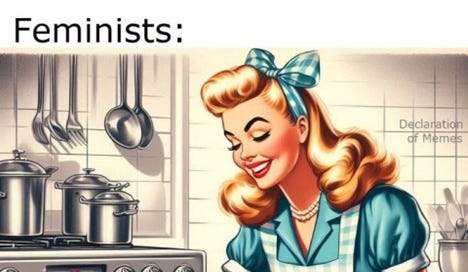



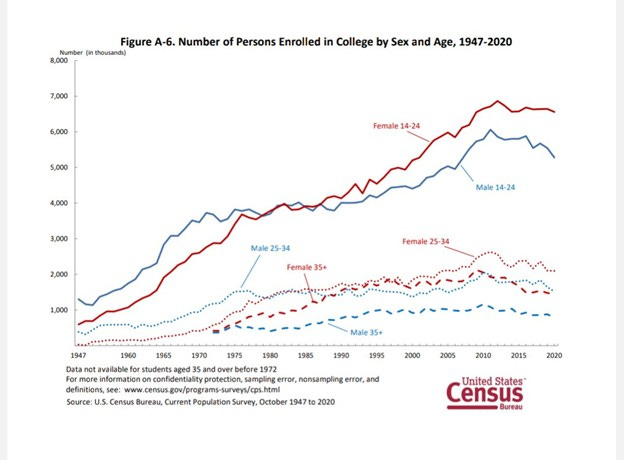

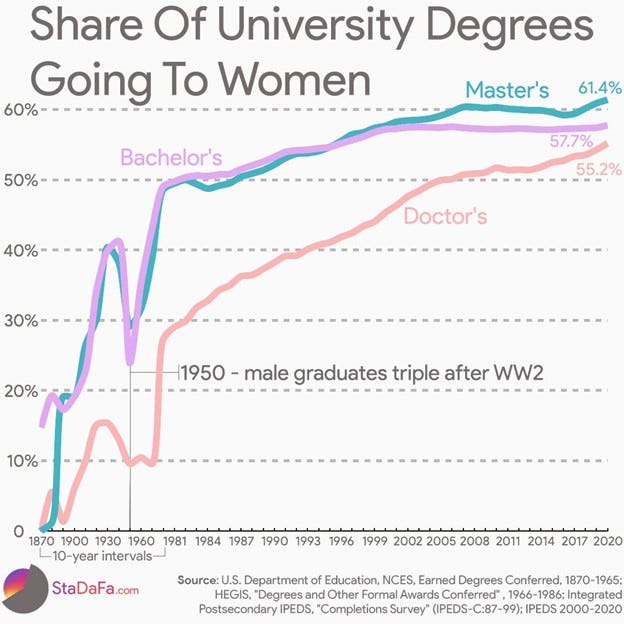


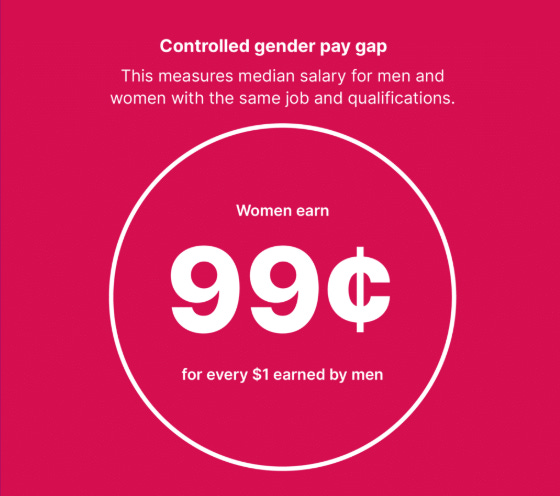
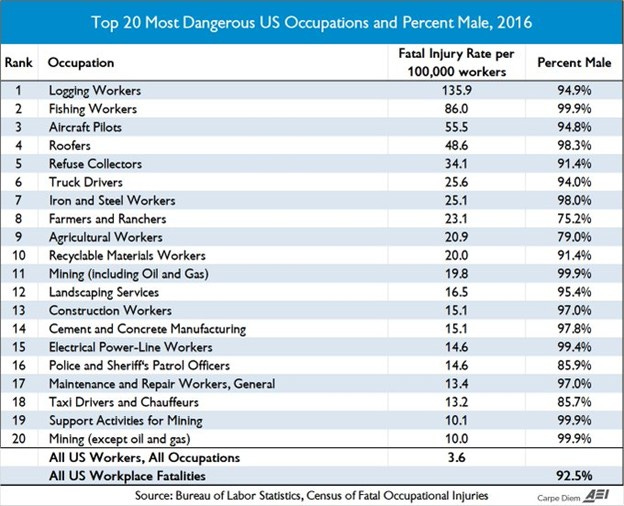
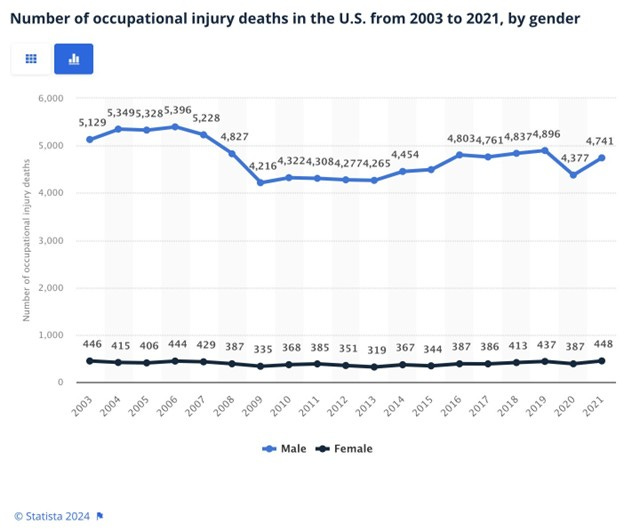

Where do unisex, role reversal, and the obliteration of gender distinctions fit into this?
What about female superiority, that wants strong, dominant and aggressive women and weak, passive effeminate men?
And there is the increasing contempt and hostility toward men on the part of spoiled, pampered, conceited and selfish women who are encouraged by neutered men.
The National Socialists and the Coomunists also tried to fundamentally alter human nature, and they brought only misery, suffering and failure.
Much more comprehensive and systematic than mine! Well done...
https://jmpolemic.substack.com/p/feminism-as-entitlement-pt-1